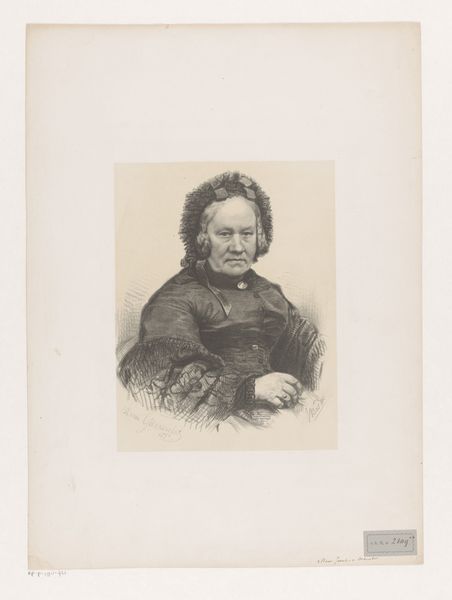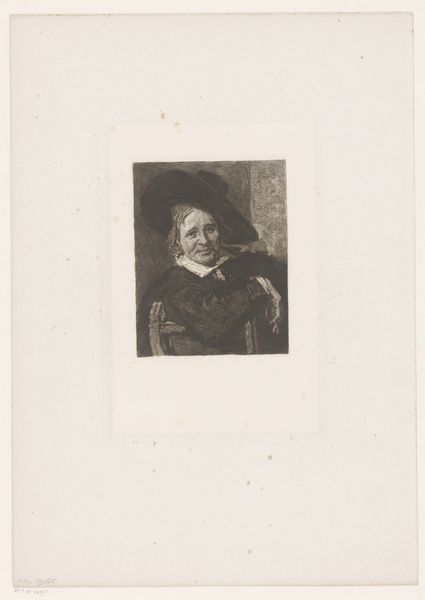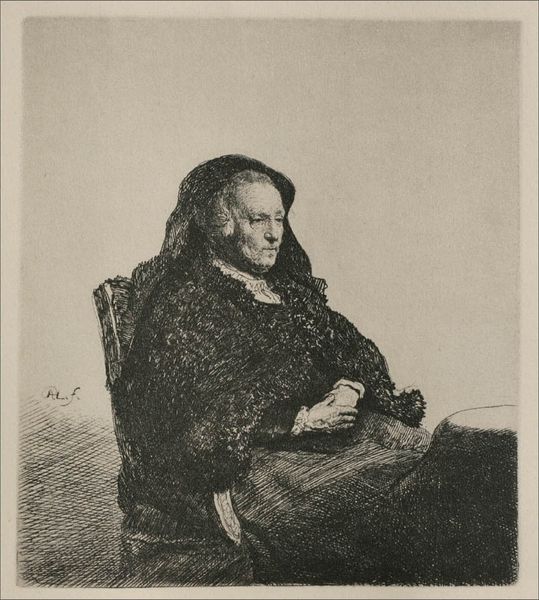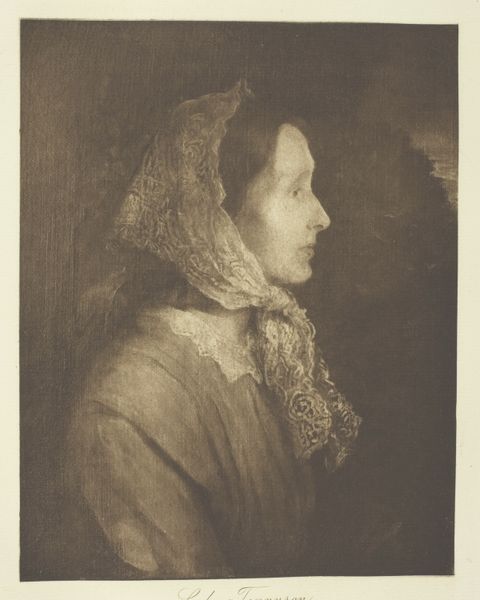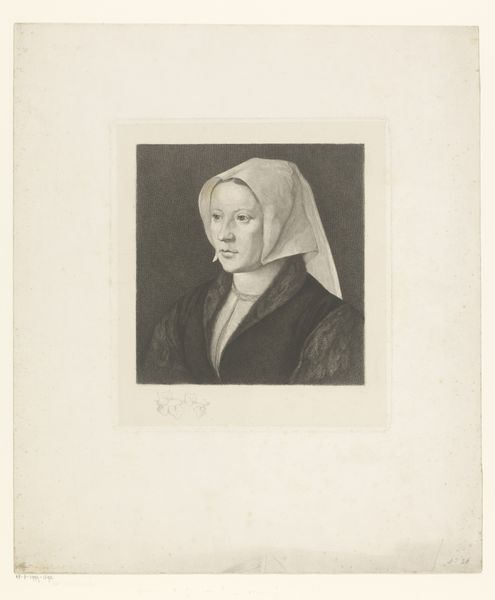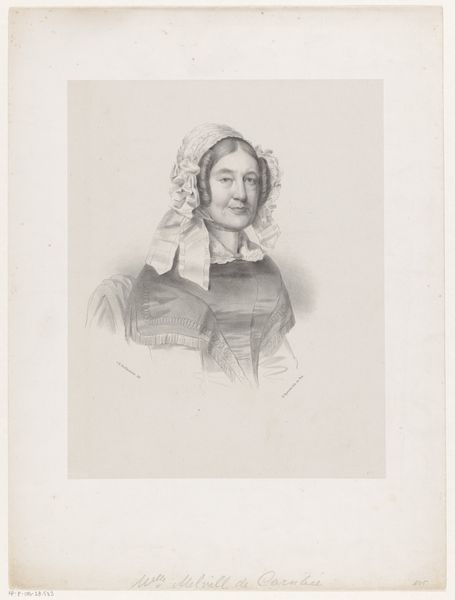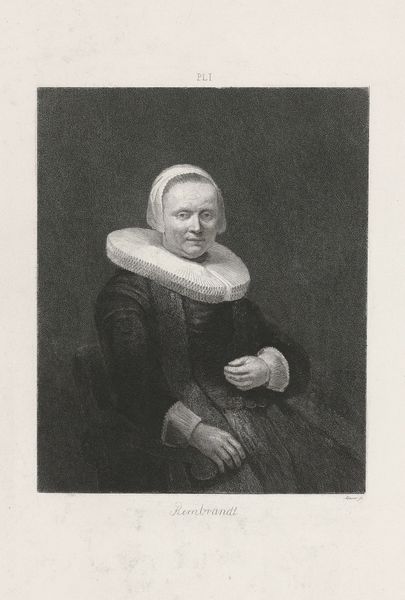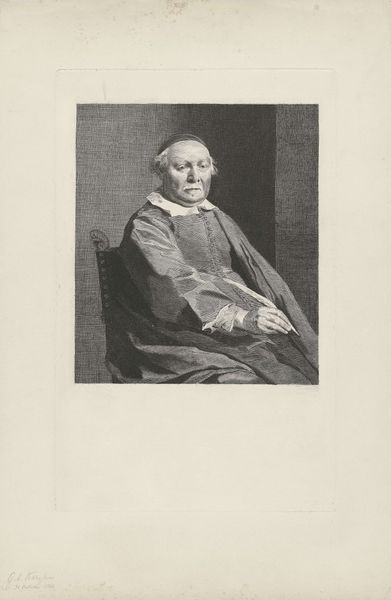
print, engraving
#
portrait
#
pencil drawn
#
light pencil work
# print
#
pencil sketch
#
charcoal drawing
#
pencil drawing
#
pencil work
#
history-painting
#
engraving
#
realism
Dimensions: height 449 mm, width 306 mm
Copyright: Rijks Museum: Open Domain
Curator: Here we have a 1777 print titled "Portret van een oude vrouw, mogelijk Saskia van Uylenburgh," created by Richard Earlom, housed here at the Rijksmuseum. It's an engraving based on a presumed Rembrandt sketch. Editor: It strikes me as very somber. The tight, dark lines of the engraving, the downturned gaze of the subject...there's a palpable weight to it. Curator: Considering it’s titled as possibly Rembrandt's wife, Saskia, we have to consider that relationship through time. He immortalized her in countless paintings during their brief but happy marriage. After her death, interpretations evolved, and this later engraving highlights a sense of loss. We also need to consider the artist copying Rembrandt’s earlier style through the filter of the 18th-century art market and the practice of replicating existing artworks for profit. Editor: Right, and it's the "replication" that grabs me. This print transforms a presumed sketch, likely very immediate and raw in its creation, into a commodity. It's about how images of women, wives of great men especially, become material possessions, reproducible objects to be consumed. Look at the careful cross-hatching – it’s meticulous labor transforming the sketch. Curator: Absolutely. Think about the conventions of portraiture during this period and what they represented regarding societal hierarchies. The subject, supposedly Saskia, is portrayed with dignity, despite the visible signs of aging and perhaps sorrow. How does this compare to other contemporary images of women? How much does our reading reflect modern sensibilities? Editor: For me, it calls attention to the industry surrounding art, the layers of labor—from Rembrandt's original mark-making to Earlom's painstaking translation and then the distribution of these prints. Even the paper it's printed on is a product of labor, of trees being pulped, processed...it makes you think of the hands involved at every level. Curator: Examining the evolution of this portrait – its origins, its transformations, and its place in our current social context reveals so much. The nuances of representation, power, and interpretation truly come into focus. Editor: Yes, this image provides a peek into how images acquire value over time and the continuous transformation from intimate portrait to an accessible object shaped by labor, replication and market demands.
Comments
No comments
Be the first to comment and join the conversation on the ultimate creative platform.
